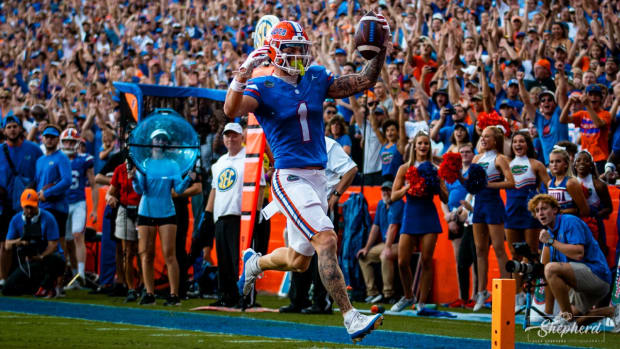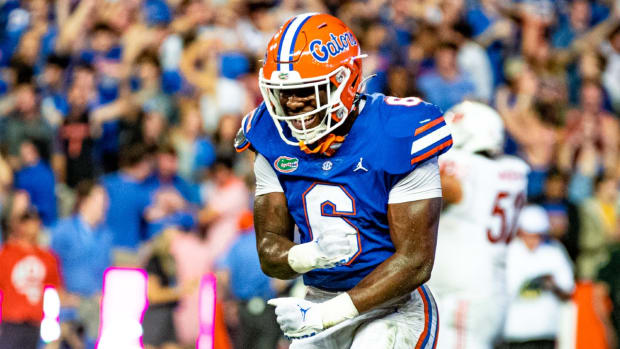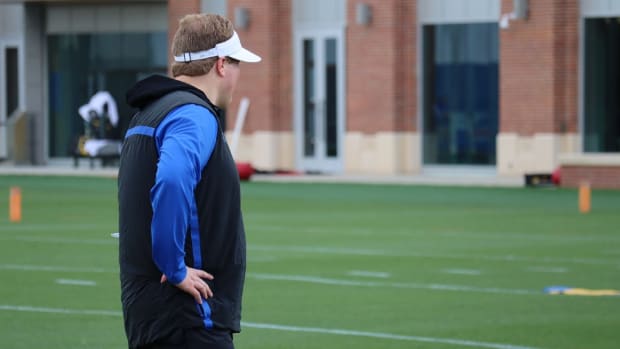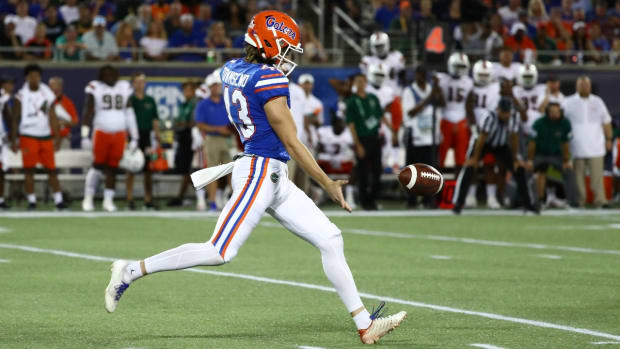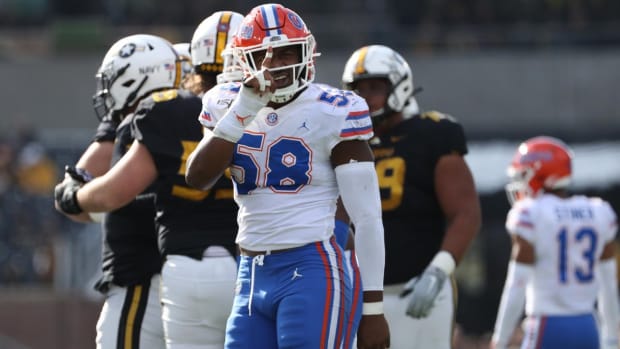Should the Gators Expand WR Jacob Copeland's Role?
With the Florida Gators getting off to a hot start on offense this season we have seen many receivers ascending within the offense, including Kadarius Toney, Trevon Grimes, Justin Shorter and Trent Whittemore, there has been one notable receiver not getting too far into the action and that's redshirt sophomore Jacob Copeland.
As a redshirt freshman, Copeland burst onto the scene in limited action catching 21 passes for 273 yards and two touchdowns. While it doesn't appear to be much on the stat sheet, Florida's top receiver from 2019 was Van Jefferson who caught 49 passes for 657 yards and six touchdowns, so even accounting for nearly just around 1/3 of Jefferson's production is significant.
In head coach Dan Mullen's offense, and specifically with receivers coach Billy Gonzales, Floirda has routinely rotated its receiver group - so much so that those who were simply spectators were shocked when Jefferson, Freddie Swain, Tyrie Cleveland and Josh Hammond made their way to the NFL either via the draft or in undrafted free agency in Hammond's case.
Much of that rotation has already been seen this season with Florida's new players at the position. The team's leading receiver - Toney - has 18 receptions for 237 yards and four touchdowns, behind him is Grimes with eight receptions for 134 yards and one touchdown, Shorter, six receptions, 46 yards, Whittemore, five receptions, 56 yards and one touchdown, and finally Copeland with just four receptions for 51 yards on the year.
Given his talents in 2019, it would appear Copeland's numbers are low through three games, especially considering his target share. His snaps per game are up quite a bit from a year ago as well - from 20.3 offensive snaps per game to 34.7 to start the 2020 season - and yet, here we are.
Against Ole Miss in week one, Copeland received five targets, catching four passes, in Week 2 against South Carolina he received just two targets with one reception, and in the team's most-recent game in Week 3 against Texas A&M, Copeland saw just one target, sparking the discussion of his usage within the offense moving forward.
With the way Florida's passing game has taken off under redshirt senior quarterback Kyle Trask, and the team's ability to create explosive plays week-after-week, it would appear that Copeland's time is coming, but without the targets, it's tough to make an accurate assessment on the subject.
As a Pensacola (Fla.) native, Copeland joined Florida as a four-star recruit who possessed incredible athleticism and size. He's currently listed on Florida's roster at 6-foot, 203 pounds, and has shown the skill set to play the type of big-time play-making receiver one may expect from a player entering his third season.
While Florida doesn't necessarily need another receiver to have a breakout game in order to provide a spark for the offense, the team certainly can use Copeland in key situations, especially given his skillset. Florida has yet to be put in a position that they've been devoid of talent at receiver, everyone has made at least one play thus far this season, but as the weeks move forward Copeland's role may need to be expanded.
With the target share being set at what it is, it would make sense to see more of Copeland moving forward, and perhaps that will occur during the team's next scheduled podcast on Oct. 31 against the Missouri Tigers.
